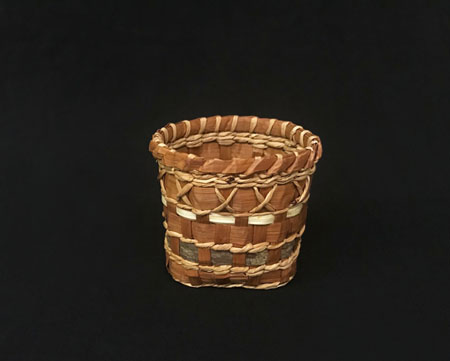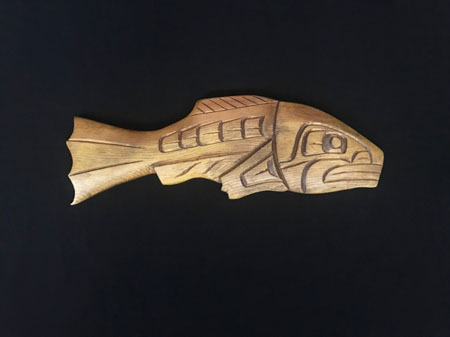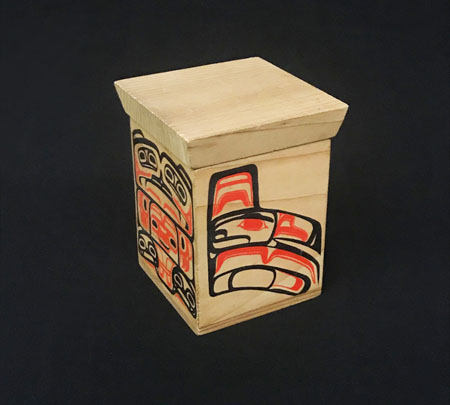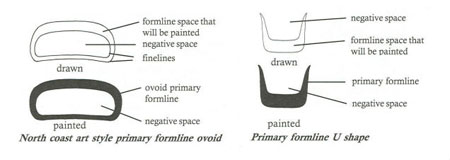Two copies of the Coastal Culture Area kit are available for checkout. This kit is one complete unit, adaptable for grades 3 to 8. Included in the kit are integrated lessons outlined in the teacher's guide, books, and artifacts that have been carefully selected to acquaint students with primary sources. Below are some images and labels about some of the artifacts in this kit.
Cedar Bark Basket
This basket is woven out of split cedar bark. It has been soaked in water, pounded, and softened to make it pliable and easier to weave. If you look carefully at the basket you can tell how it was made. They were used for gathering and storing food, such as berries and roots. Baskets were made by most of the people from the coastal culture area.

Salmon Wood Carving
This carving is made of cedar and represnts the Salmon found in Northwest legends. Many of poeple of the coastal culture area considered these creatures to be their ancestors and believed that they had special powers. Notice the traditional design shapes in this carving. The artist was a Kwakiutl carver from British Columbia, Canada.

Bentwood Box
This box represents the storage boxes that were used by many people in the coastal culture area. It is not a true bentwood box, as the corners are of separate pieces, but it is accurate in all other ways. Bentwood boexs were made out of a single piece of cedar which was bent into a four-sided box shape. Grooves were cut where the corners would be, and the cedar was then steamed to make it flexible. The first and fourth sides were then joined with wooden pegs. Designs were painted on the box and it was used to store goods.

Coastal Formline Art
Coastal desings are highly complex art forms. They represent many of the animals found on totem poles such as Raven, Whale, Bear, and Thunderbird. The main color for the design is black and it forms the basic outline of the figure. Red is the second color used and generally forms the details of the design. Known as formline art, northwest coastal art is distinguishable through the use of two main characteristic shapes: the ovoid and the u-form. See if you can find these shapes in the design of the bentwood box above.

